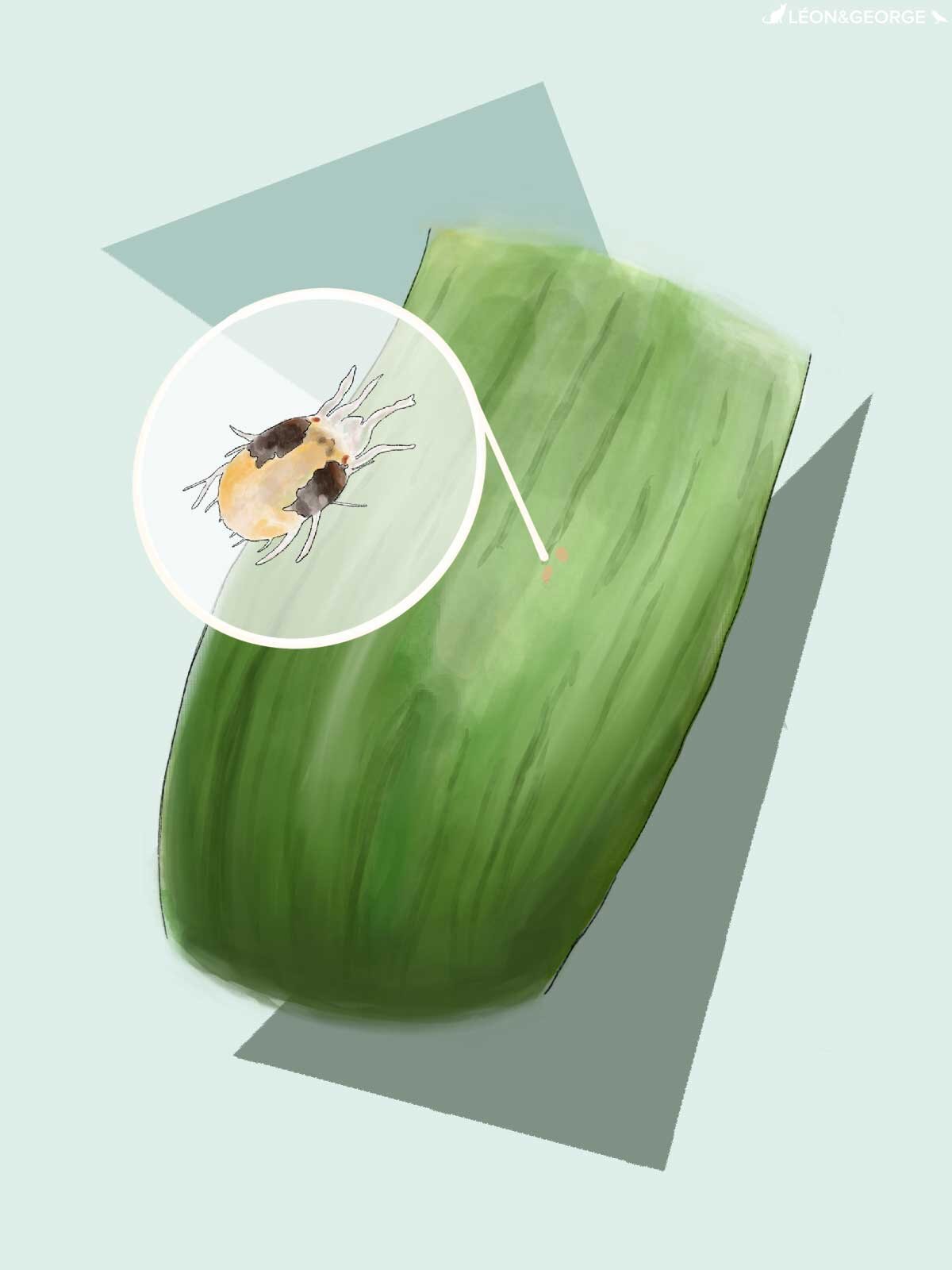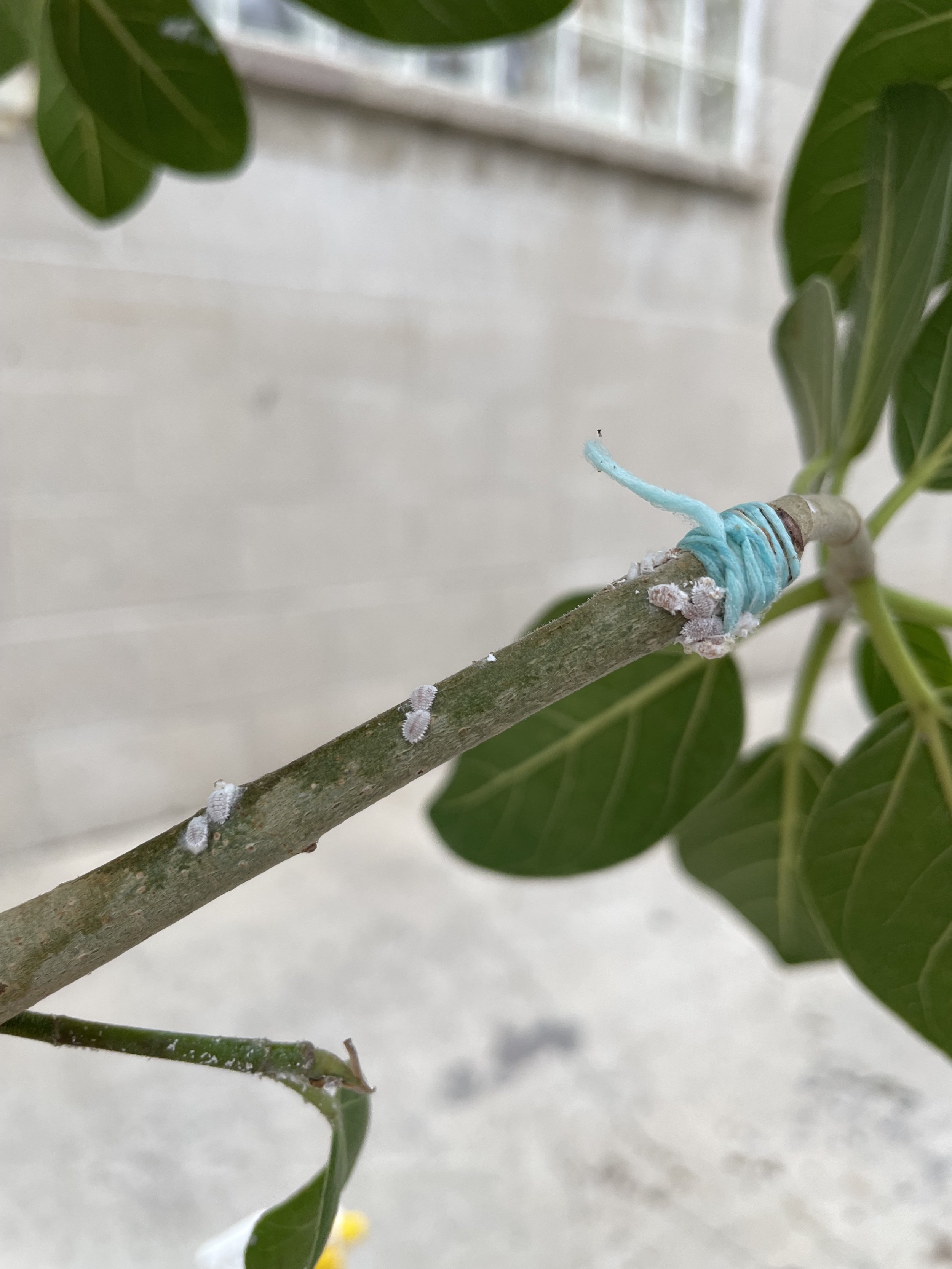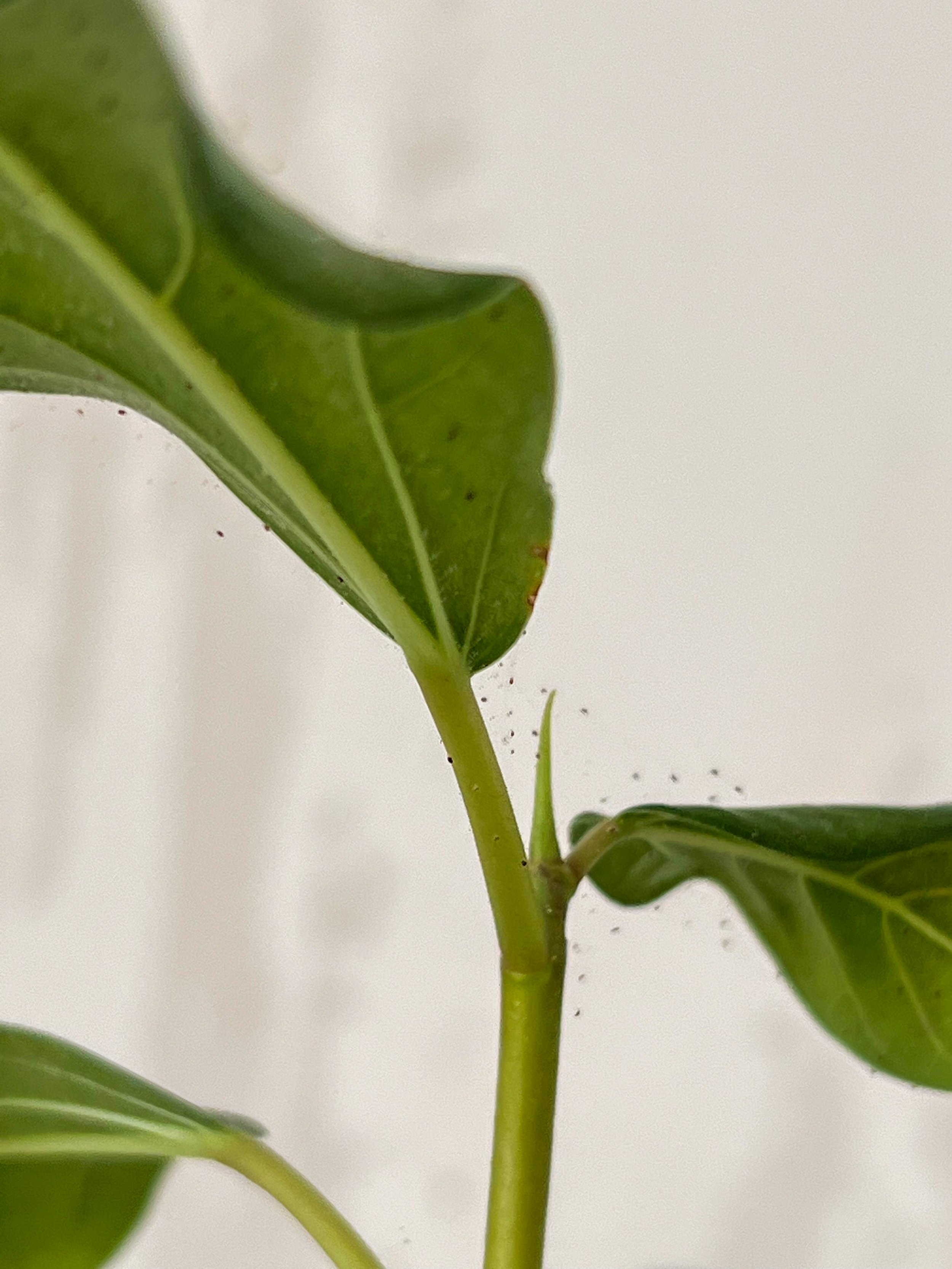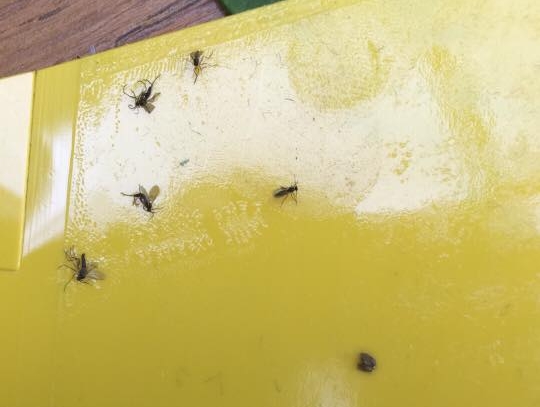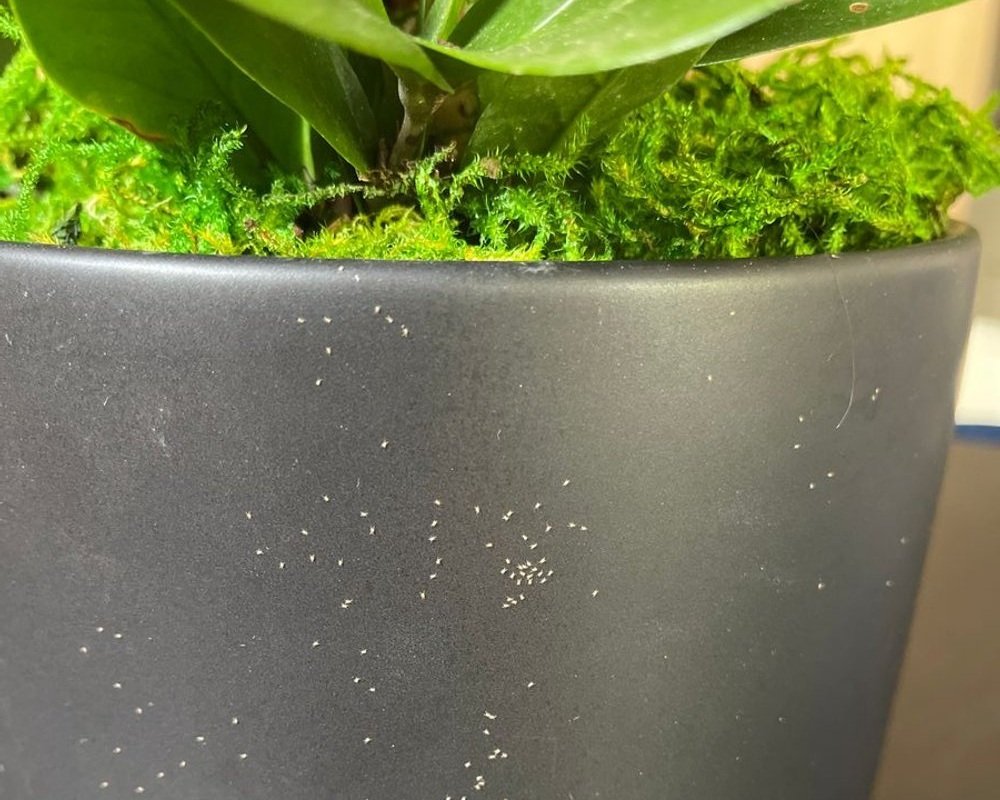Identifying and Treating Common Houseplant Pests
While indoor plants can live for years with zero pest problems, there is always a possibility for an infestation if not careful. And while a few bugs may coexist with a plant without causing major harm, the real problem arises when a small infestation quickly multiplies into a full-blown invasion. Excessive feeding by insects can cause significant damage to your plants, and there's also a risk of pests spreading from one plant to others nearby. To ensure the well-being of your houseplants, it's essential to learn how to identify common indoor insect pests and effectively control them.
As a preventative measure, keep your plants clean by regularly wiping down the leaves with water and a gentle soap or neem oil, an all natural pest control solution that also acts as a leaf shine.
Keep reading to see the most common types of pests on houseplants, how to identify them and how to treat them.
Mealybugs
Mealybugs
Mealybugs are soft-bodied insects that leave white cottony masses along stems and beneath leaves. They use their mouth parts to feed on plant sap, potentially causing damage. To prevent infestations, inspect your plants before bringing them indoors.
How to treat Mealybugs
If you notice a fuzzy white mass on leaves and stems, it's a sign of a full-blown attack. Take action early by washing the bugs off the plant and regularly inspecting your houseplants to catch and control mealy bugs before they become unmanageable.
Read our full article on how to treat mealybugs on houseplants
Spider Mites
Spider Mites
These tiny creatures lay eggs and feed on the undersides of leaves, leaving webbed areas, yellowing foliage, and debris. They are most common in hot, dry conditions, making summer the prime season for spider mite infestations.
How to treat for spidermites
To keep spider mites at bay, maintain moist conditions by using humidifiers or periodically misting your plants with water. Adding peat moss to the potting mix can also help.
Read our full article on how to treat spider mites on plants
Scale Insects
Scale Insects
Scale insects appear as smooth, rounded bumps on stems and leaves. They feed on plant sap and can remain in one location for an extended period.
How to treat for scale on houseplants
To eliminate scale insects, manually remove them using a fingernail or soft toothbrush. Rinse the plants with water to dislodge bugs from between leaves. Follow up with an insecticide to kill any remaining larvae, using neem oil or insecticidal soap based on the severity of the infestation.
Read our full article on how to treat scale on houseplants
Fungus Gnats
Fungus Gnats
Fungus gnats are tiny flies that are attracted to moist soil, laying eggs there and causing an infestation. The emerging larvae feed on decomposing organic matter and plant roots.
How to treat for fungus gnats
To deal with fungus gnats, allow the soil to dry between waterings to kill larvae and deter egg-laying females. Regularly spray with neem oil until the fungus gnats no longer appear.
Aphids
Aphids
Aphids are soft-bodied insects that suck plant juices, often found on new growth and undersides of leaves. Curled, distorted new leaves and a sticky residue indicate their presence.
How to treat for aphids
Combat aphids by spraying or wiping the leaves with a mild soapy solution every two to three days for up to two weeks.
Thrips
Thrips
White Flies
These pests can be found on the undersides of leaves or flying around plants, piercing plant tissue and causing damage. Yellow, mottled foliage and leaf drop are signs of whitefly infestation. Act quickly by blasting them off with water or using insecticidal soap spray multiple times as needed.
How to Treat for White Flies
Act quickly by washing the plant thoroughly with high pressure water or using insecticidal spray such as neem oil multiple times as needed.
Thrips are winged insects that cause damage by tearing plant tissue and sucking plant juices. Thrip-infested areas appear as brown or silvery blotches. Eliminate thrips by shaking the branches to dislodge them onto a cloth and disposing of the cloth to eliminate the bugs.
How common pest problems start
Houseplant pests can enter your home in various ways, such as through fresh produce, cut flower bouquets, potted gift plants, newly purchased plants, potting soil, clothing, or even through open windows. Understanding their entry points can help you take preventive measures.
When dealing with a pest infestation on your indoor plants, there are some general rules to follow:
Isolate the infected plant: As soon as you notice a bug problem, move the affected plant away from other plants to prevent the infestation from spreading.
Physically remove pests: Rinse the plant with water in a sink, tub, or outdoors to remove as many pests as possible from the foliage. You can also use tweezers or a paper towel to manually remove insects if the infestation is small.
Use rubbing alcohol: Apply rubbing alcohol directly on the insects using a spray bottle or cotton swabs. The alcohol will quickly evaporate, killing the pests without harming the plant.
Dish soap solution: Mix 1/2 teaspoon of dish soap with a quart of water in a hand-sprayer and spray it directly on the pests. The soapy solution suffocates the insects and helps control their population.
Insecticidal soap: Consider using insecticidal soaps designed for indoor or outdoor plant pests. Follow the instructions on the product label for safe and effective use. Super Neem Oil is a highly effective and all-natural pest control that can be used as a both preventative and combative solution.
Manual removal: If you're not squeamish about bugs, you can manually remove them using tweezers or a paper towel. This method works well for small infestations.
Chemical insecticides: If the infestation is severe and other methods have failed, you can use chemical insecticides specifically formulated for houseplants. Always check the product label to ensure it targets the specific insect you're dealing with, is safe for your plant, and suitable for indoor use.
How to prevent pest infestations on houseplants
Prevention is key in keeping your houseplants pest-free. Here are some tips to avoid infestations:
Thoroughly inspect plants before purchasing: Avoid bringing home plants with visible signs of pests, including flying insects around them. Be wary of plants purchased at big box gardening centers, where they are often neglected or not properly cared for, making them more susceptible to pest infestations.
Quarantine new plants: Isolate any new houseplants for about a month and closely monitor them to ensure they are pest-free before placing them near other plants.
Maintain cleanliness: Remove dead foliage and periodically wash plant leaves with water and all-natural soap like L’Original (specially formulated for plants and other precious surfaces!) to keep them clean and discourage pests.
Regular inspections: Inspect your plants occasionally for any signs of pests. Early detection can prevent infestations from spreading.
Soil replacement: If a plant has experienced a severe infestation, replace the soil with fresh potting mix after treating the pests to ensure the eradication of any remaining eggs or larvae.
Optimal plant care: Provide your plants with the recommended amount of light, water, and fertilizer according to their specific needs. Healthy plants are more resilient to pests.
Avoid extreme temperatures: Keep your plants away from cold or hot drafts near windows, doors, or air ducts, as temperature stress can weaken them and make them more susceptible to infestations.
Despite your best efforts, some infestations may become too severe to salvage the plant. In such cases, it's best to discard the infested plant and replace it with a new, healthy one to protect the rest of your plants from further harm.
Remember, identifying and addressing houseplant pests promptly is crucial for maintaining the health and vitality of your indoor garden. By implementing preventive measures and taking effective control actions, you can keep your plants thriving and insect-free.
Designed to Thrive
Premium plants, potted and delivered, plus lifetime access to 24/7 Plant Doctor support.
